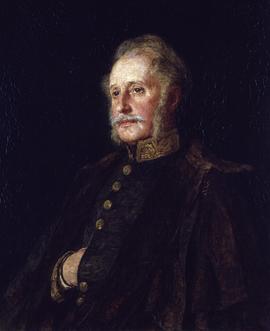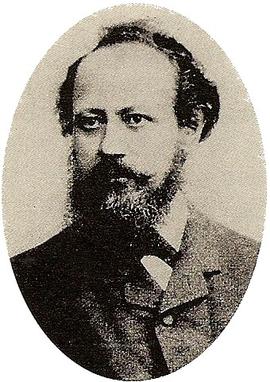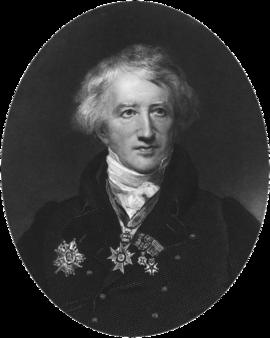Naturalist and author of Deep-sea Fishing and Fishing Boats
Brian Houghton Hodgson is widely recognised for the great progress he made in describing the birds and mammals of Nepal. He wrote more than 140 zoological papers, ranging from descriptions of single species to checklists of the fauna, and presented ZSL with his manuscript notes and drawings
John Edward Gray was a British zoologist. He was the elder brother of zoologist George Robert Gray and son of the pharmacologist and botanist Samuel Frederick Gray. Gray was keeper of zoology at the British Museum from 1840 until 1874, before the natural history holdings were split off to the Natural History Museum. He published several catalogues of the museum collections that included discussions of animal groups and descriptions of new species
Christian Anton Goering was a German naturalist, painter and graphic artist who spent several years in Venezuela. He learned taxidermy from his father, who was a member of several ornithological societies. It was at a meeting of one of these societies that he met Christian Ludwig Brehm who helped him obtain a position at the Ornithological Museum of the University of Halle, where he worked under the direction of Hermann Burmeister. From 1856 to 1858, they travelled in South America and he decided to pursue his interests in natural history. He also went to London, where he took lessons from the zoological artist Joseph Wolf. While he was there, the Secretary of the Zoological Society, Philip Lutley Sclater, asked him to go to Venezuela to collect specimens for the British Museum
James Maxwell McConnell Fisher was a British author, editor, broadcaster, naturalist and ornithologist. He was an authority of Gilbert White and made over 1,000 radio and television broadcasts on natural history subjects.
Fisher was the son of Kenneth Fisher (also a keen ornithologist and headmaster of Oundle School from 1922 to 1945); his maternal uncle was the Cheshire naturalist Arnold Boyd. He was educated at Eton and began studying medicine at Magdalen College, Oxford, but later switched to zoology. He took part in the Oxford Arctic expedition in 1933 as an ornithologist.
After university he joined London Zoo as an Assistant Curator, and during the war studied rooks for the Ministry of Agriculture. He later became a leading member of the RSPB and IUCN, a member of the National Parks Commission and vice-chairman of the Countryside Commission. He presented the BBC Radio series Birds in Britain from its inception in March 1951 until its end, twelve years later. Fisher was one of the members of the small party that on 18th September 1955 raised the Union Flag and took possession for the UK of the tiny, uninhabited, rock islet of Rockall in the North Atlantic. As well as writing his own books, he was an editor of Collins' New Naturalist series. He was the resident ornithologist in the regular Nature Parliament series broadcast in the 1950s on BBC radio as part of Children's House. He was awarded the British Trust for Ornithology's Bernard Tucker Medal in 1966.
He was married to Margery Lilian Edith Turner, and they had six children, including the publisher Edmund Fisher. He died in a car crash in September 1970. After Fisher's death he was commemorated in two ways. A public appeal allowed the seabird island of Copinsay, Orkney, to be purchased as a permanent nature reserve dedicated to his name. Also, his papers were subsequently purchased by Bruce Coleman and John Burton and presented to The National Archives
Naturalist
Gerald Malcom Durrell was a British naturalist, writer, zookeeper, conservationist and television presenter. He founded the Durrell Wildlife Conservation Trust and the Jersey Zoo in 1959. He wrote approximately forty books, mainly about his life as an animal collector and enthusiast, the most famous being My Family and Other Animals (1956). After the war. Durrell joined Whipsnade Zoo as a junior or student keeper
Charles Robert Darwin was an English naturalist, geologist and botanist, best known for his contributions to the science of evolution. Darwin published his theory of evolution with compelling evidence in his 1859 book On the Origin of Species. His five-year voyage on HMS Beagle established him as an eminent geologist whose observations and theories supported Charles Lyell's conception of gradual geological change, and the publication of his journal of the voyage made him famous as a popular author. In 1871 he examined human evolution and sexual selection in The Descent of Man, and Selection in Relation to Sex, followed by The Expression of the Emotions in Man and Animals (1872). His research on plants was published in a series of books, and in his final book, The Formation of Vegetable Mould, through the Actions of Worms (1881), he examined earthworms and their effect on soil
A French naturalist and zoologist, sometimes referred to as the 'founding father of palaeontology'. Cuvier was a major figure in natural sciences research in the early 19th century and was instrumental in establishing the fields of comparative anatomy and palaeontology through his work in comparing living animals with fossils
Robert Oliver Cunningham was a Scottish naturalist. In January 1866 he was appointed Professor of Natural History in the Royal Agricultural College, Cirencester, but resigned in June in consequence of being appointed by the Admiralty upon the recommendation of Joseph Dalton Hooker, to collect plants as naturalist on board HMS Nassau. His natural history notes and narrative of the voyage was published in 1871 as The Natural History of the Straits of Magellan. In all, Cunningham published 18 scientific papers before 1872, his first which was about gannets was his theses but the others were mainly on his observations from the voyage of the Nassau. He presented some of these papers to the Zoological Society of London and to the Linnean Society. In 1871 Cunninham was appointed Professor of Natural History at Queens College, Belfast where he spent the following 31 years as a university teacher




